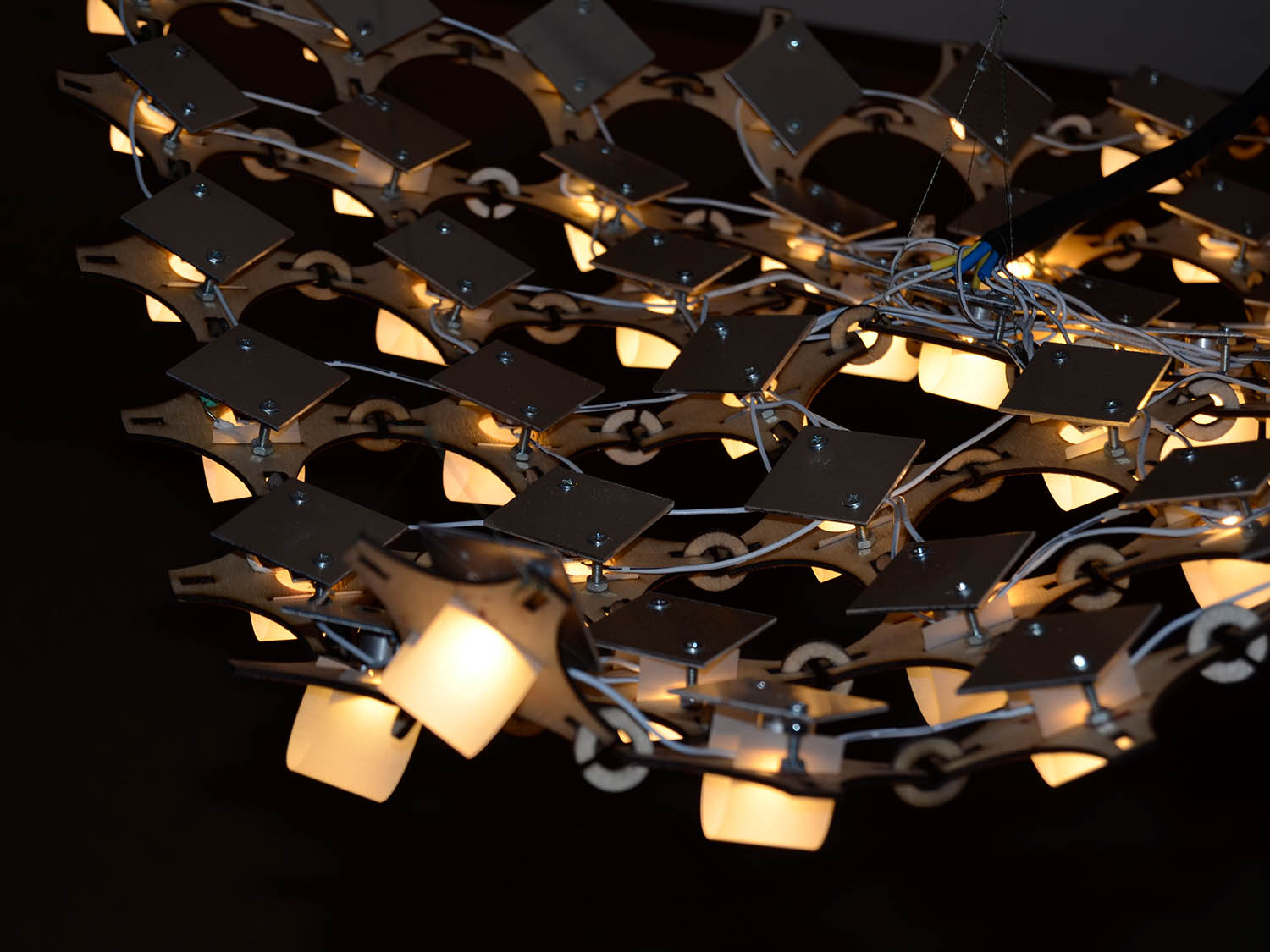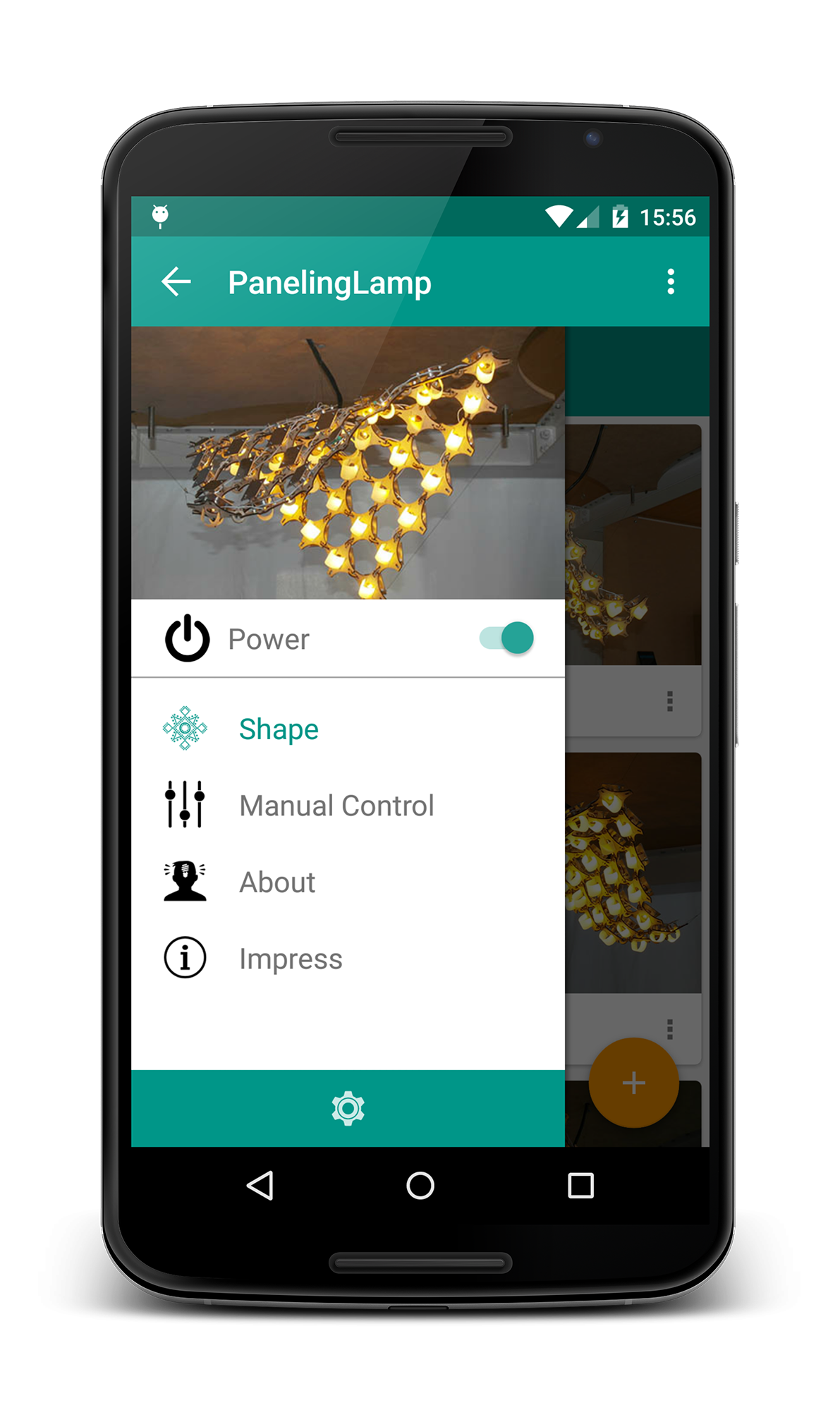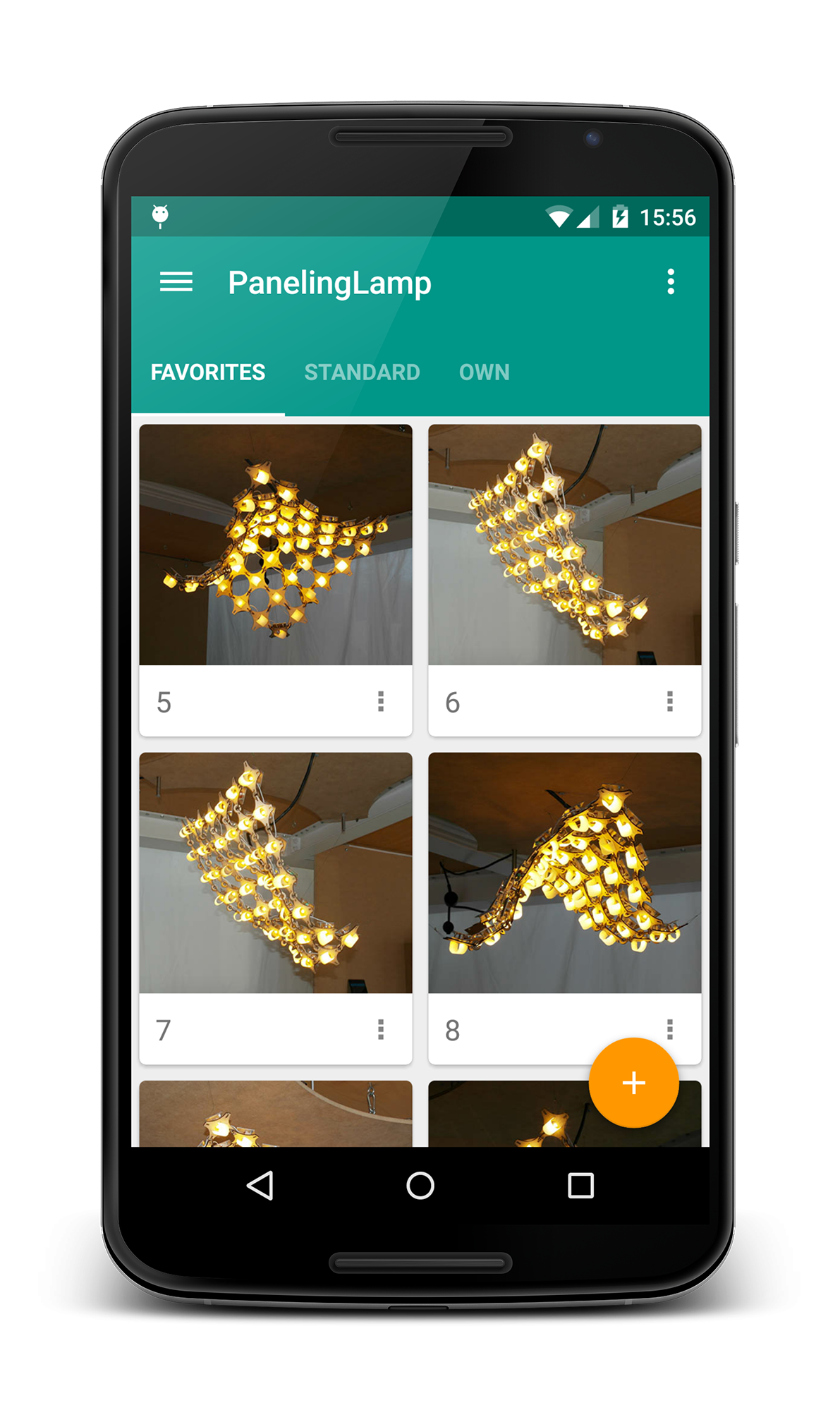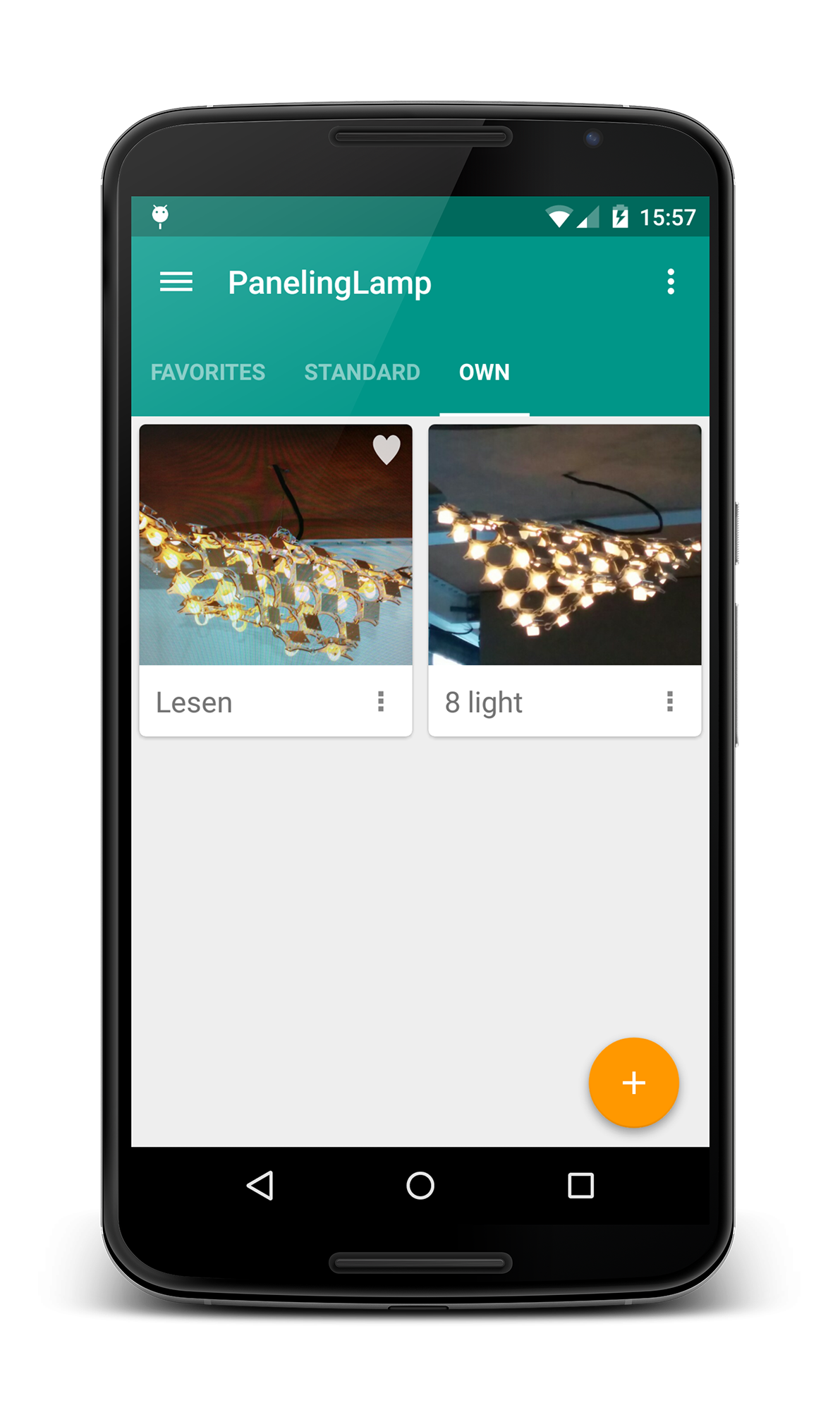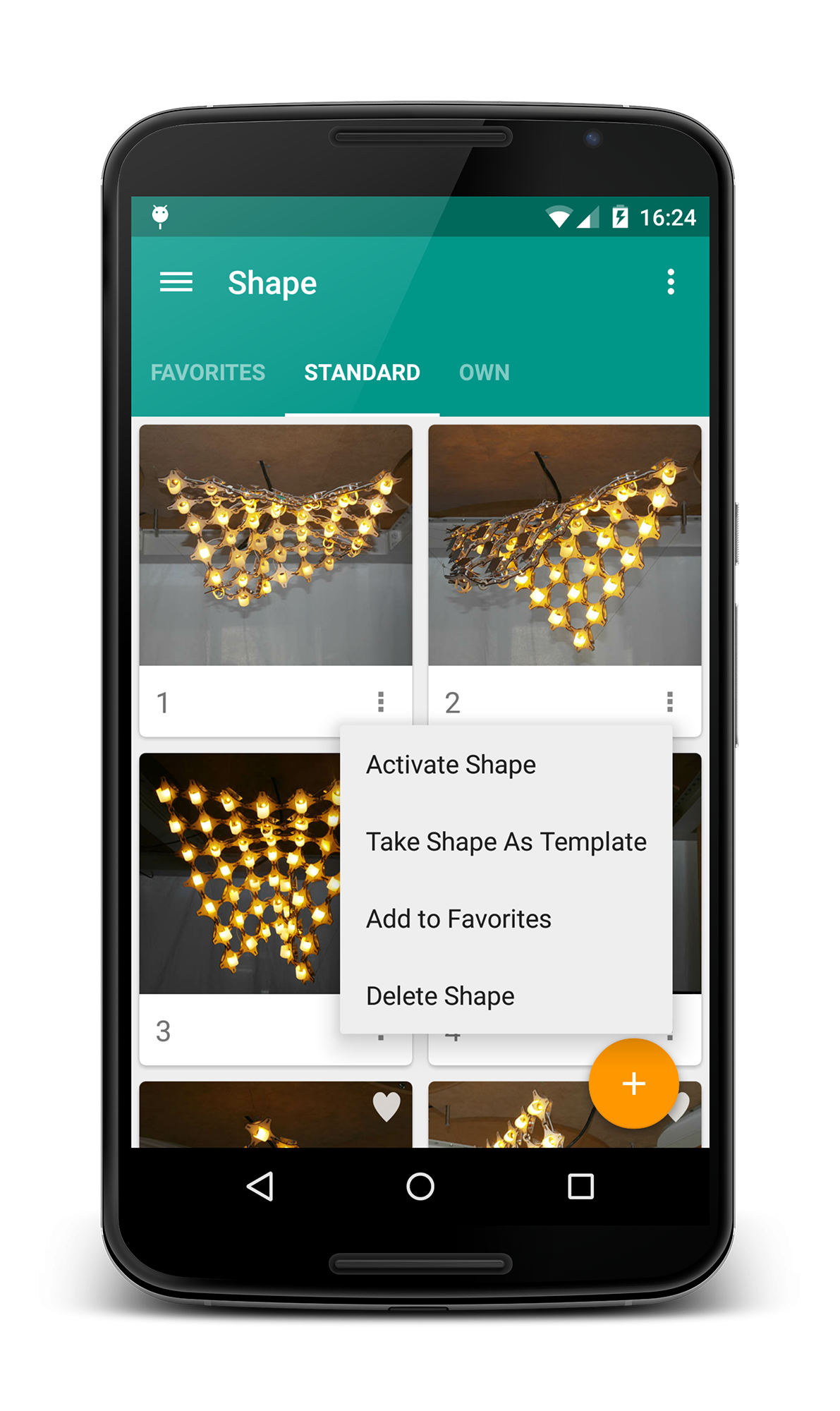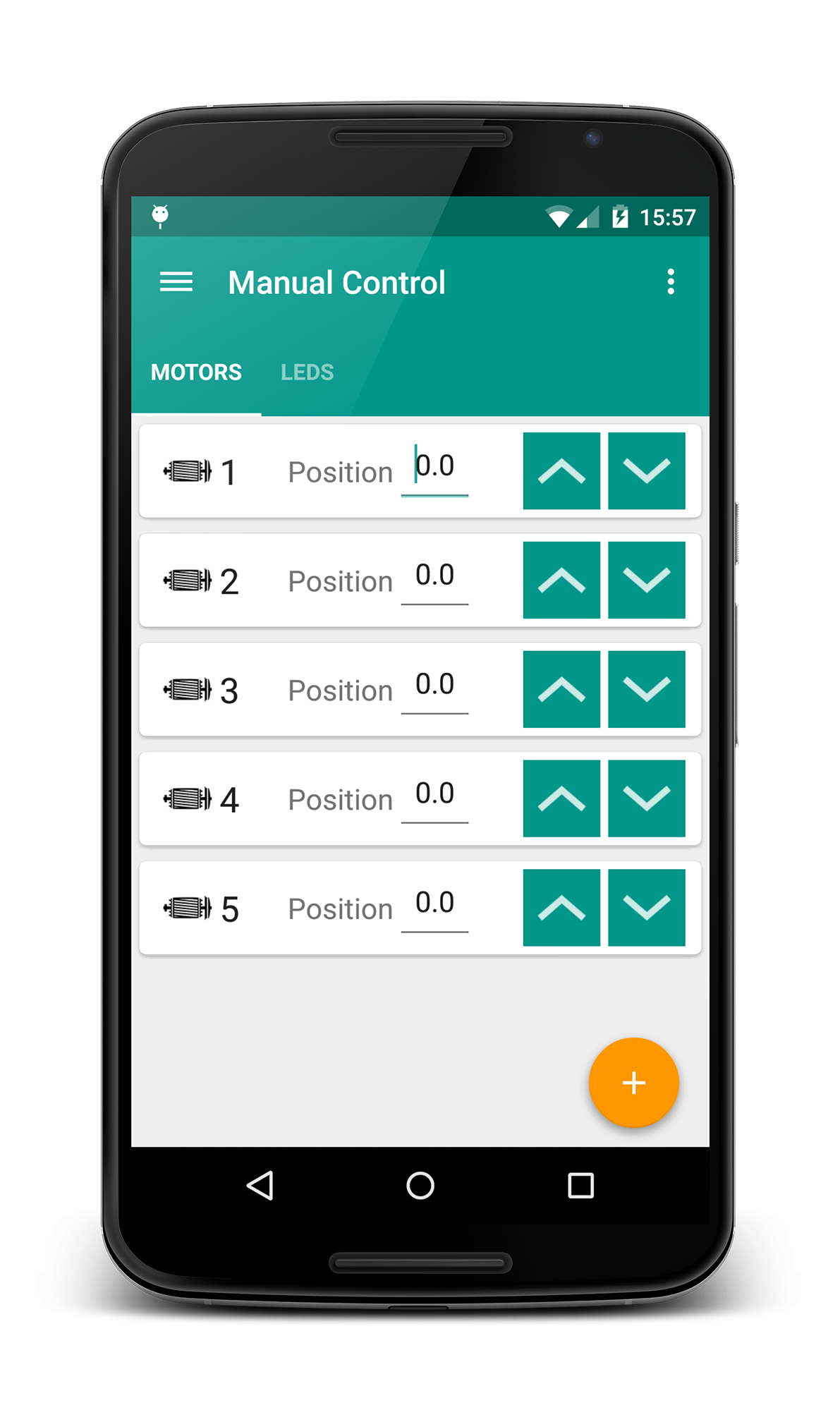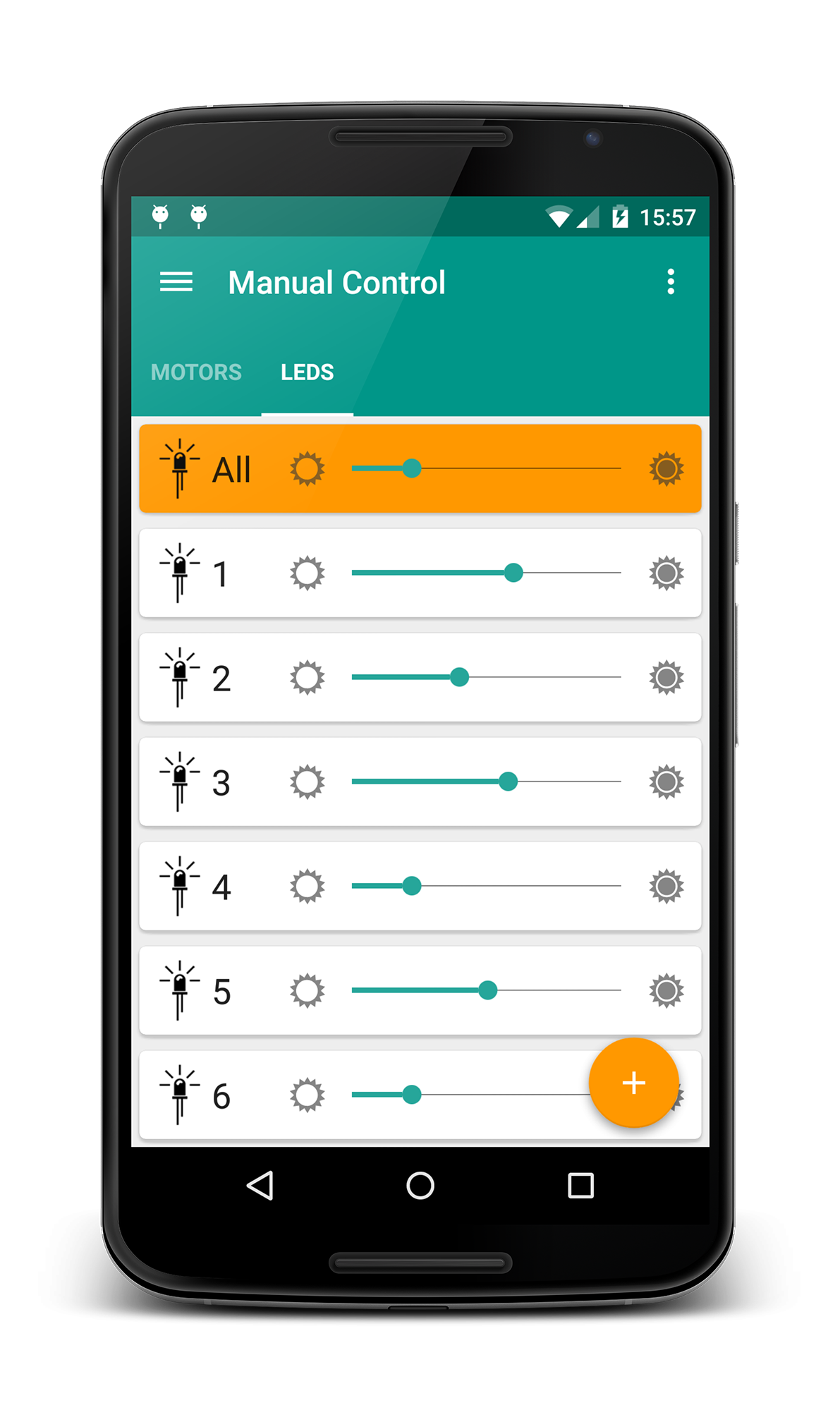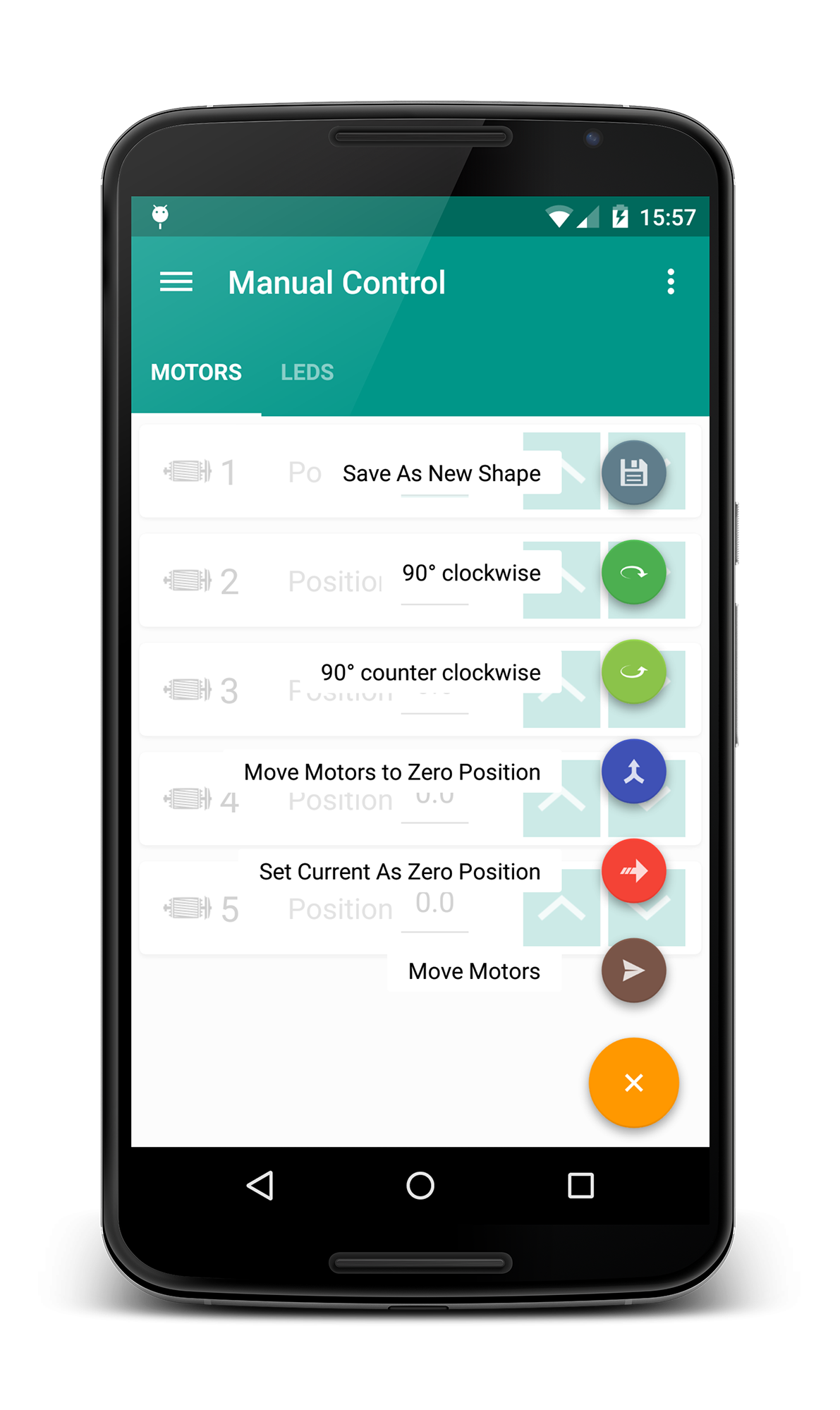In this paper we present an interactive shape changing light object that can be controlled through a smartphone application. The object is attached to the ceiling and comprises a matrix of 7 x 7 loosely coupled LED elements, hanging on stepper motors above at five points that lower and raise the corresponding parts of the object.

The Lichtform, also called PanelingLamp, is a high-fidelity prototype wich has been developed in an interdisciplinary graduate student project as a collaboration between students of product design and media informatics at Saarland University and Collage of Fine Arts Saar. The objective of the project was to develop smart objects for the living room of the future which are equipped with sensors and can observe their environment to communicate with the inhabitants.
In recent years the rise of enabling technologies for interactive lighting as well as actuated / kinetic installations has led to increased interest into research on dynamic and adaptive light situations. Philips recently launched the Hue bulb that can be remotely controlled and programmed through various APIs without additional infrastructures, which made it a popular development platform. Further, the Arduino micro-controller platform significantly simplified physical prototyping and became a tremendously popular tool for students and developers world wide.
The Lamp
The PanelingLamp is the result of a three month timeframe and a milestone, from which further design and HCI topics will be explored. This shape changing light installation is attached to the ceiling, and allows for remote shape configuration through a smartphone.
Typically, a contemporary living room is equipped with various light sources. Each of them has a specific functionality and role for particular situations. There is often one bright light source on the ceiling to illuminate the entire room. An additional lamp is often located on or near the desk to provide light for desktop work. Further lights may be distributed in the room to create ambient, often dim light in order to create a relaxing, cozy atmosphere or similar positive emotions.
We wanted to create a novel light object which incorporates the functionality of all the aforementioned lights in a room. In order to be able to mimic their functions and possibly create new use cases, this all-embracing light object has to be able to adapt in shape, intensity and direction. Thus, the kinetic light wall aims at adapting to different situations and generating different light facets with one central light source.
The idea of the kinetic light wall is to place it at the center of the ceiling (eventually filling the whole ceiling in future versions) such that it can lighten the entire room evenly. Due to its kinetic functionality, we can change the shape of the light to form different lamp shades. We can direct the light to a specific area similar to a spotlight, for instance for a working environment (desk). To morph the kinetic light wall into an ambient light, we can adjust the shape in a way that lets the light illuminate itself, generating a shadow at the ceiling and creating indirect illumination. Dimming the light wall will further increase the atmospheric effect by creating a warm luminous color.
Besides that the lamp has to please the eye and fit into the interior design of the room. Controlling shape and intensity over some kind of remote control should certainly be simple for the resident.
Realization
The current version of the light object is a ceiling lamp which consists of 7 × 7 loosely connected panels. Each panel holds a LED with 66 lumen and is obscured by a dimmer paper. Respectively, seven panels are combined to form a segment which can be controlled in light intensity. At each corner and the middle of the paneling wall, a cord connects the wall with a stepper motor, each of which is mounted on a board hang- ing parallel to the ceiling. The board also provides space for the electronics. The structure of five different pulling points allows to deform the paneling wall into the desired shape.
The main control element of the lamp is an Arduino Mega micro controller, which manages the position of the five stepper motors and the intensity of the 49 LEDs. Moreover, it offers a communication interface for graphical user interfaces via Serial Port and via Bluetooth wirelessly. Thereby it is possible to synchronize and change the current status of the PanelingLamp remotely.
Control
As an example of an GUI, we developed a simple app for Android OS. The app allows to change the position of each stepper motor and the light intensity of all seven segments independently. After a satisfying setup is found, the configuration can be stored on the smart- phone such that it can be easily recalled later on. We currently provide 15 predefined standard shapes by default.
Conclusion and Outlook
The PanelingLamp prototype was already exhibited in an open house presentation at College of Fine Arts Saar where the lamp was installed in a simulated living room besides other smart object exhibitions. The lamp was running in an demo mode in which the shape and light intensity was changed every minute automatically. Moreover, the visitors had the opportunity to control the lamp manually on an tablet. Altogether, our moving light object was an eye catcher and the feedback of the visitors was overwhelmingly positive. They liked the possibilities of the lamp and the easy control over the app. In a next step, we will further explore the possibilities and constraints of the current prototype. We will try to simulate concrete light situations and analyze which functionalities and scenarios the lamp can cover and how people react to the lamp. Furthermore, it is planned to equip the prototype with environmental sensors like infrared sensors or cameras to track the people and their activities in the room to automate the shape changes.












